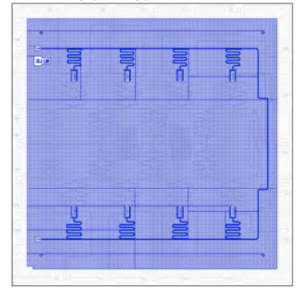APPLICATIONS OF TECHNOLOGY:
- Superconducting qubit architecture
- Conducting non-trivial quantum simulations
BENEFITS:
- Increases hardware efficiency and versatility
- Limited on-chip complexity
- Reduces the cost of synthesizing interactions between distant qubits
- Allows for the development of a novel quantum processor unit (QPU)
BACKGROUND:
Despite the recent improvements of two-qubit gate fidelity, the entangling of distant qubits still requires cascading multiple nearest neighbor two-qubit gates, and the overall compound operation error rate grows exponentially with the distance between the qubits on the connectivity graph. This invention aids a more scalable and connected architecture given that resource efficiency of a highly connected system has been demonstrated in various Atomic, Molecular, and Optical (AMO) physics quantum simulation experiments.
TECHNOLOGY OVERVIEW:
Conventional efforts in the domain of Noisy Intermediate-Scale Quantum (NISQ)-era superconducting quantum circuits have focused primarily on improving two-qubit gate fidelity. Researchers at Berkeley Lab and UC Berkeley have broadened the scope of scientific problems that are solvable by an NISQ quantum processor unit (QPU) by enhancing qubit connectivity in addition to gate fidelity.
This technology combines the controllability and integrability of superconducting quantum circuits with the flexibility of a programmable, all-to-all reconfigurable qubit connectivity graph in a large qubit-count processor. It establishes the power to accelerate the exploration and demonstration of useful NISQ-era quantum applications.
DEVELOPMENT STAGE: Prototype chip has been made and works as expected.
RELATED TECHNOLOGY:
Scalable Quantum Computer Architecture with Coupled Donor-Quantum Dot Qubits IB-3140
PRINCIPAL INVESTIGATORS:
Irfan Siddiqi
Jie Luo
Brian Marinelli
FOR MORE INFORMATION:
https://arxiv.org/abs/2303.03507
STATUS: Patent pending
OPPORTUNITIES: Available for licensing or collaborative research.
